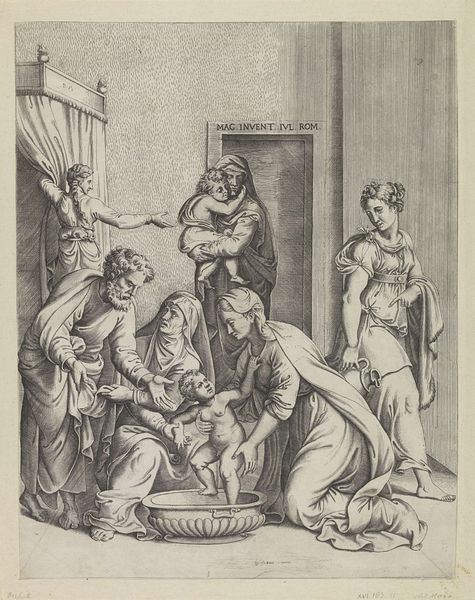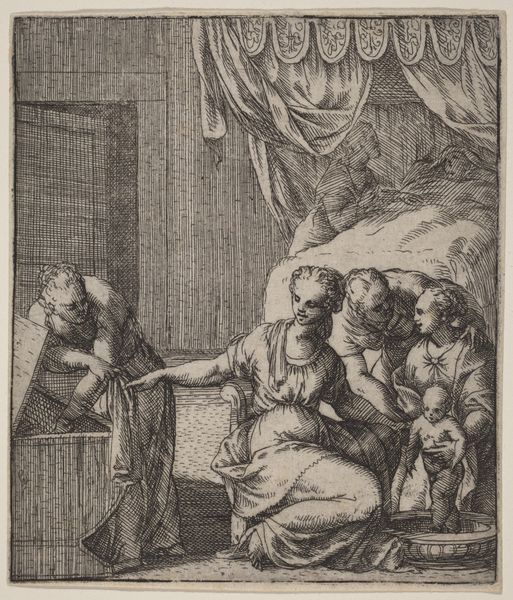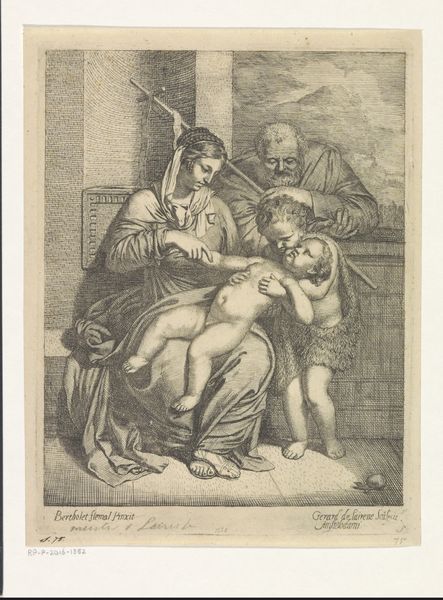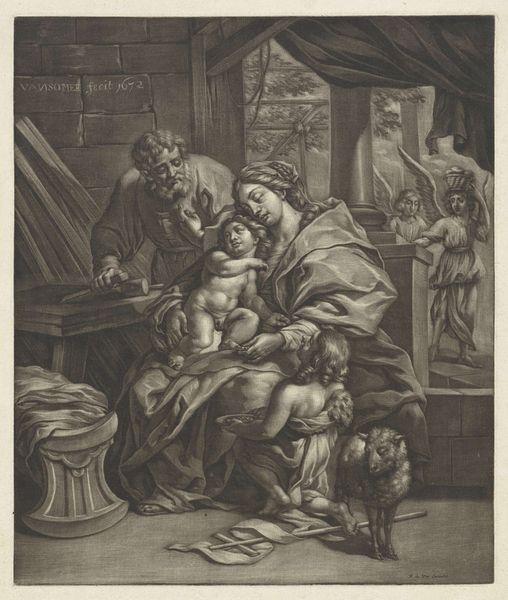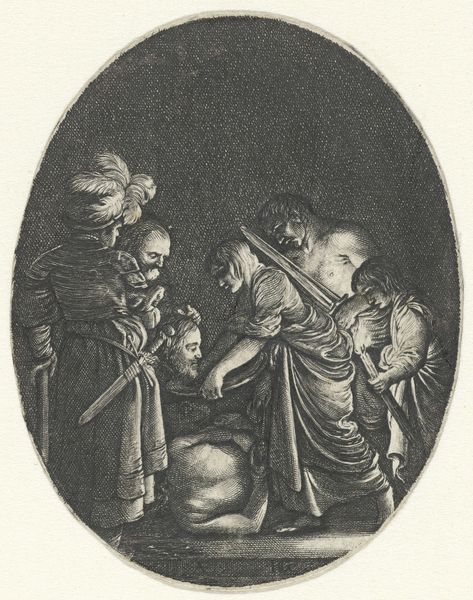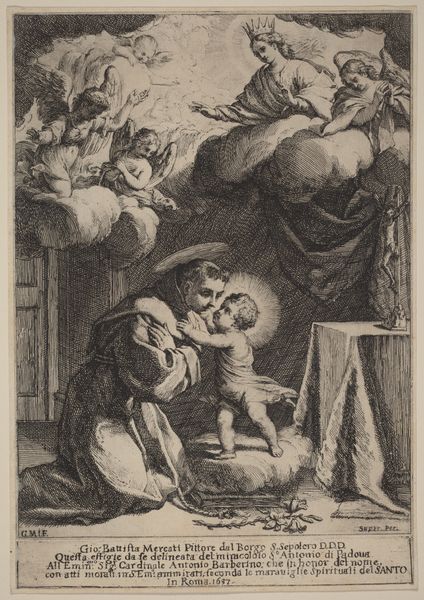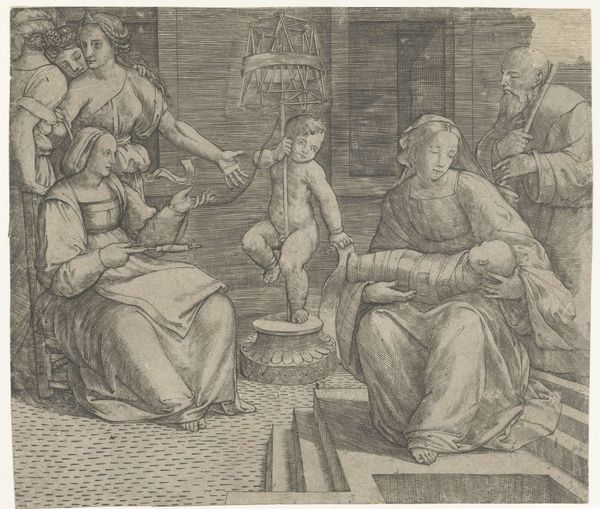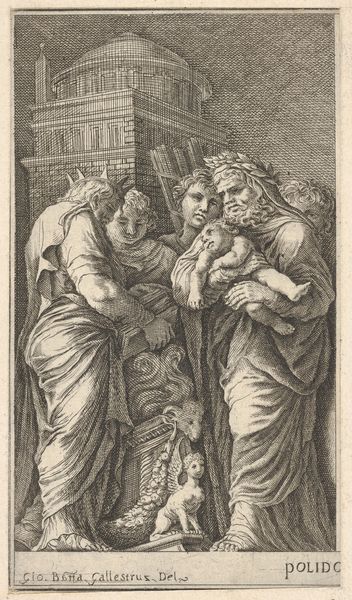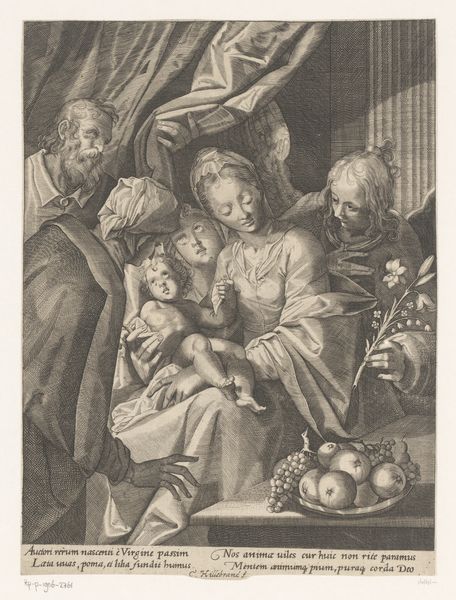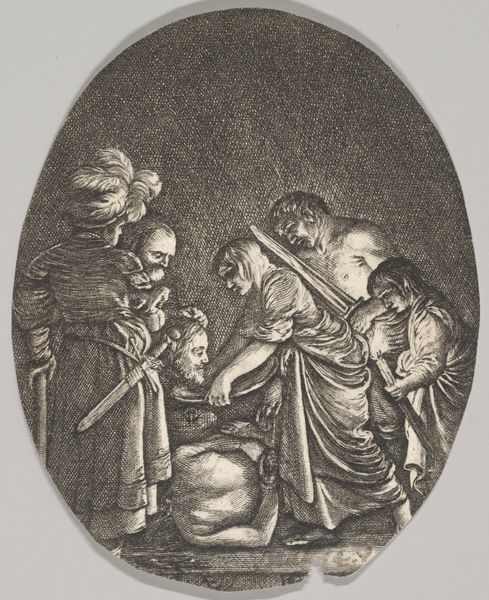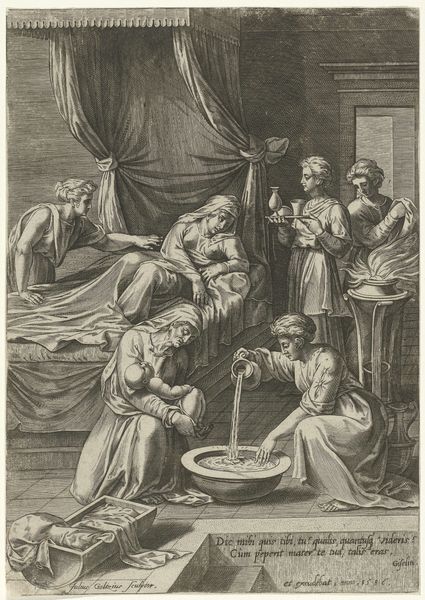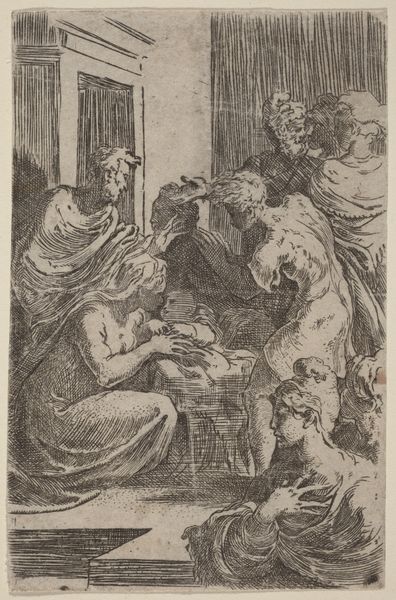
drawing, print
#
drawing
#
imaginative character sketch
#
light pencil work
#
quirky sketch
# print
#
pencil sketch
#
personal sketchbook
#
ink drawing experimentation
#
pen-ink sketch
#
sketchbook drawing
#
storyboard and sketchbook work
#
sketchbook art
Dimensions: Sheet: 16 15/16 × 13 3/8 in. (43.1 × 34 cm)
Copyright: Public Domain
Curator: Here we have a work entitled "The Holy Family," a print realized by Battista Angolo del Moro sometime between 1535 and 1573, now residing here at The Met. Editor: It's such a detailed rendering! The linework almost vibrates with life, despite being monochrome. You can really feel the intimacy and energy of this domestic scene. Curator: Indeed. What’s especially fascinating is the artist’s context. Del Moro was working during the late Renaissance, when printmaking was exploding across Europe as both a form of artistic expression and a powerful communication tool. Religious imagery, naturally, played a key role. Editor: Absolutely. And looking at the arrangement, one sees more than a literal depiction. The central image is that of ritual purification, echoed in other visual systems beyond just the Christian faith. Water as renewal, washing away of the old… Curator: It places this birth within a much wider narrative. Note how figures emerge from darkness into light, framed by a doorway. Consider the inscription, almost like a divine decree set into the architecture itself. Editor: You are right, that text adds to the weight of this seemingly candid moment. Also observe how Joseph stands watch, slightly removed, while all female attendants occupy the space. Such an intense expression is portrayed during a tender occasion. It touches upon themes of divine ordinance, but also feminine knowledge. Curator: It prompts me to reflect upon this tension, actually, within a moment like the Nativity, both the powerful and powerless negotiating for control over history itself. This image, created during the volatile years of the Reformation and Counter-Reformation, suggests the religious anxieties about who could lay claim to divine narratives. Editor: Interesting point, to imagine art carrying unspoken dialogues like this is what keeps drawing us to them time and again. Curator: Indeed, even a seemingly simple print reveals complex social tensions. Editor: A truly captivating snapshot that continues to challenge assumptions.
Comments
No comments
Be the first to comment and join the conversation on the ultimate creative platform.
